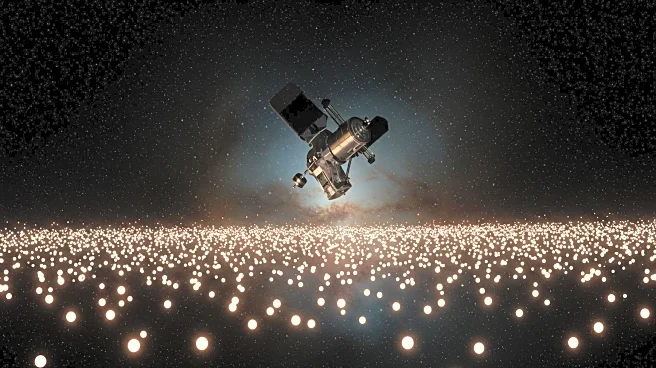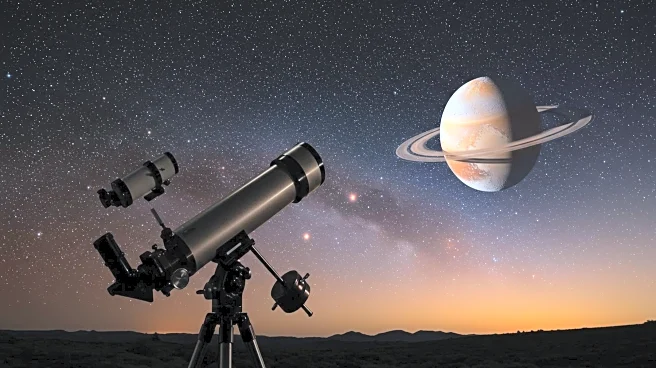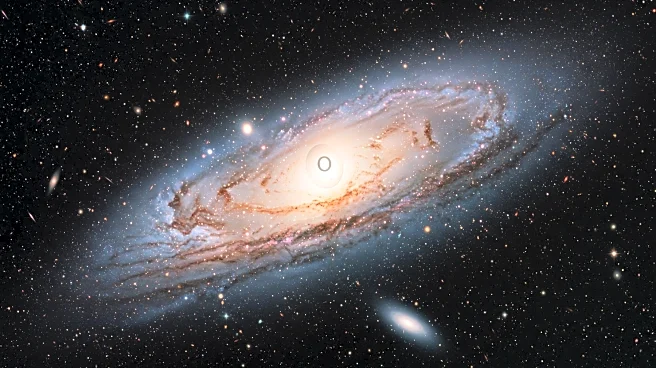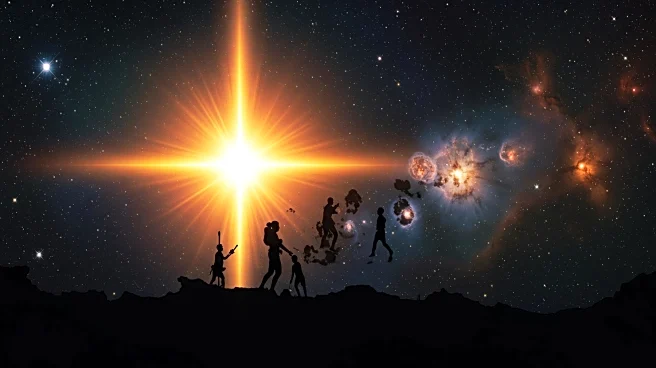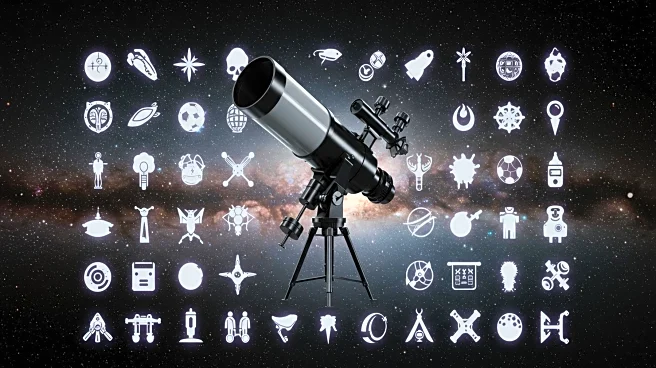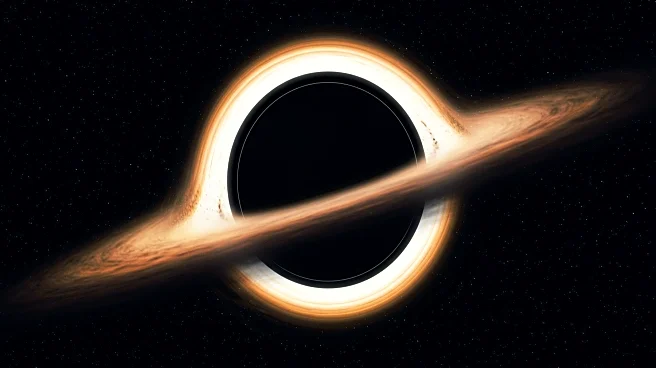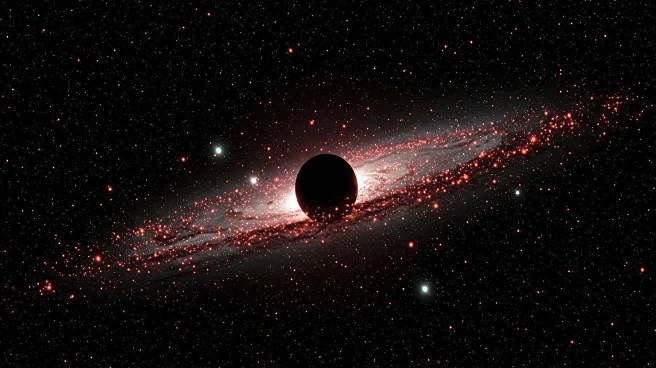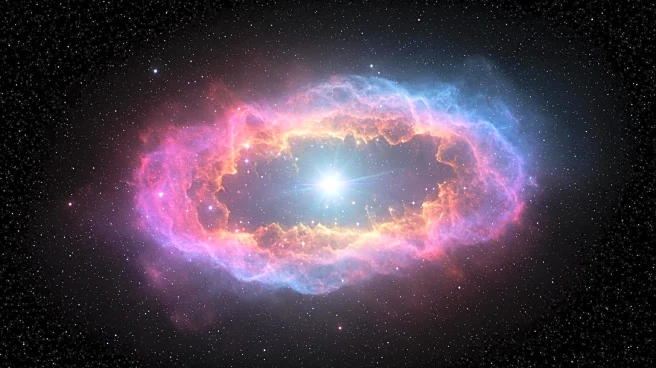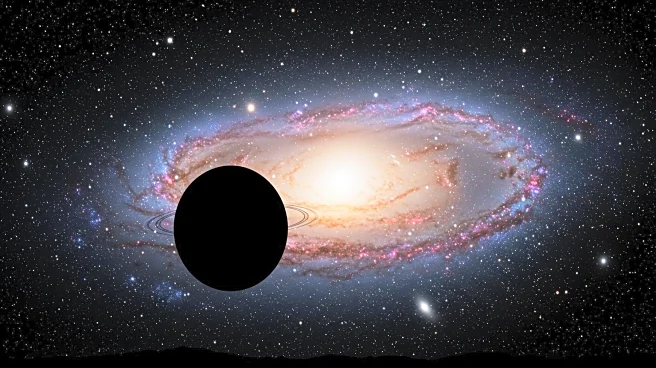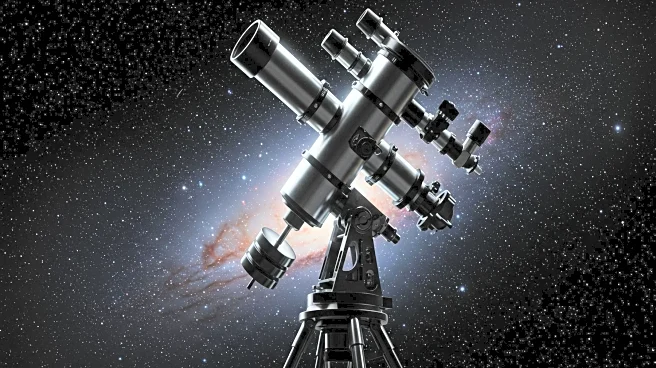Rapid Read • 7 min read
Recent observations by the James Webb Space Telescope (JWST) suggest that Earendel, previously thought to be the most distant star ever discovered, may actually be a star cluster. Earendel was initially identified by the Hubble Space Telescope in 2022 and believed to have formed 900 million years after the Big Bang. However, new research published in The Astrophysical Journal indicates that Earendel's spectral features align more closely with those of globular clusters found in the local universe. This discovery was made possible through gravitational lensing, which magnifies distant objects, allowing astronomers to study Earendel's light despite its vast distance of 12.9 billion light-years from Earth.
AD
The reclassification of Earendel from a single star to a star cluster has significant implications for our understanding of the early universe. If Earendel is indeed a star cluster, it challenges previous assumptions about the formation and evolution of stars shortly after the Big Bang. This finding could lead to a reevaluation of the conditions and processes that governed star formation in the universe's infancy. Additionally, the use of gravitational lensing to study such distant objects highlights the potential of advanced telescopes like JWST to uncover new insights into cosmic history and the structure of the universe.
Further studies using JWST are expected to continue exploring the nature of Earendel. Researchers aim to monitor microlensing effects, which could provide more definitive evidence about whether Earendel is a star cluster or a single star. These observations will help refine our understanding of highly magnified objects and contribute to the broader field of astrophysics. The ongoing analysis of Earendel and similar objects will likely influence future research programs and observational strategies using JWST and other telescopes.
AD
More Stories You Might Enjoy
